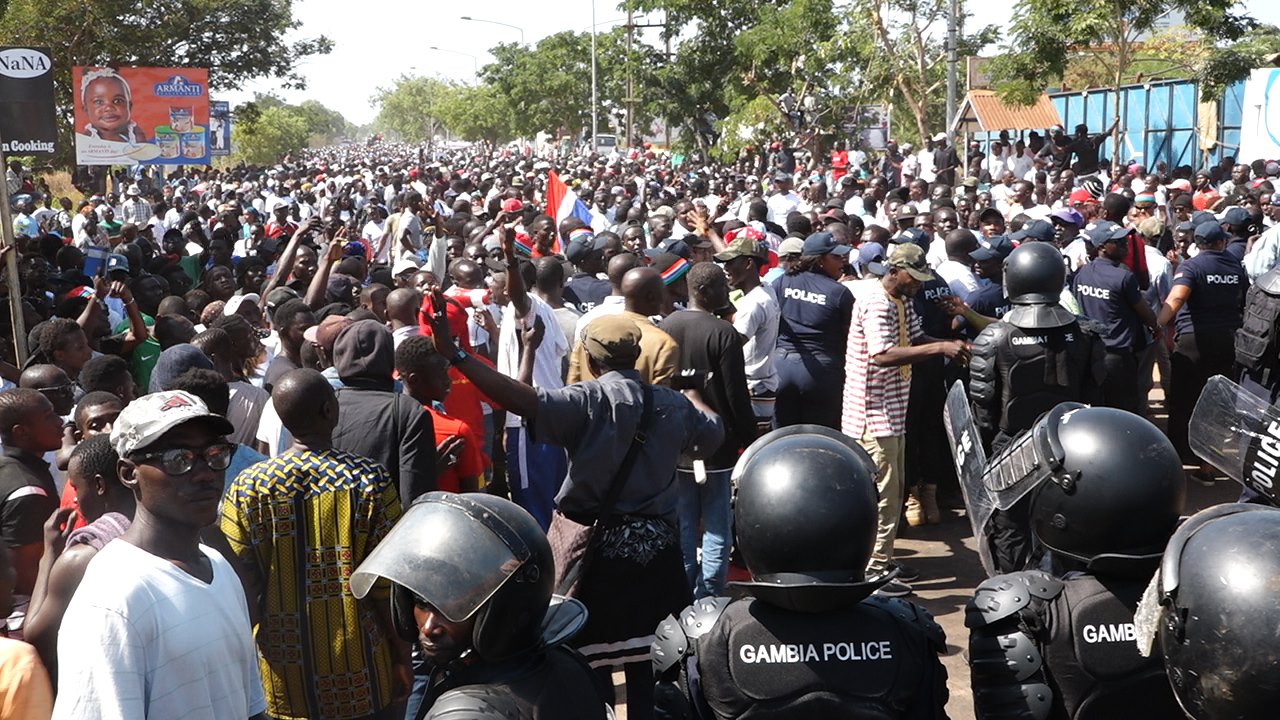By Mo Silla
The Gambia’s energy sector is facing significant challenges due to its reliance on foreign suppliers for electricity generation and the depreciation of the Gambian Dalasi against key foreign currencies like the Franc CFA and the US Dollar. Contracts with external providers such as SENELEC and Karpowership have provided critical electricity for the country but have introduced vulnerabilities that are now exacerbated by unfavorable currency fluctuations. The resultant increase in energy costs has placed financial strain on The Gambia’s National Water and Electricity Company (NAWEC) and, by extension, the wider economy and consumers.
This analysis explores the causes of The Gambia’s energy challenges, the direct impact of currency depreciation on energy costs, the broader implications for the economy, and potential long-term solutions for achieving energy independence and stabilizing costs.
Heavy Dependence on Foreign Energy Suppliers
The Gambia has long struggled with domestic energy production, leading NAWEC to secure external sources of electricity to meet growing demand. Two key agreements illustrate the extent of The Gambia’s reliance on external suppliers:
• Power Purchase Agreement (PPA) with SENELEC: On March 31, 2022, NAWEC signed a PPA with La Société Nationale d’Électricité du Sénégal(SENELEC), which committed Senegal to supply electricity to The Gambia. This agreement aimed to address The Gambia’s immediate energy deficit. However, because the contract is denominated in Franc CFA, The Gambia is now vulnerable to fluctuations in the exchange rate between the Dalasi and the Franc CFA, further increasing the costs of imported electricity.
• Karpowership Contract: In 2018, NAWEC signed a contract with Karpowership, a Turkish company, to provide a 36 MW floating power plant (Powership)to meet The Gambia’s energy needs. Although initially a temporary solution, the contract has been extended several times, underscoring the country’s continued dependency on external power sources. This contract, denominated in US Dollars, presents another challenge for The Gambia as the Dalasi has steadily depreciated against the US Dollar since 2018, resulting in higher energy costs in local currency terms.
While these agreements have temporarily resolved The Gambia’s electricity shortfall, they come with long-term risks, particularly due to currency depreciation and the associated financial burdens.
The Impact of Dalasi Depreciation on Energy Costs
The Gambian Dalasi has depreciated significantly against both the Franc CFA and the US Dollar since the signing of these energy agreements. This depreciation has led to a sharp increase in the cost of fulfilling NAWEC’s energy contracts, adding financial strain to the company and leading to higher costs for Gambian consumers.
SENELEC Agreement in Franc CFA
• Initial Exchange Rate (March 2022): When NAWEC signed the contract with SENELEC, the exchange rate was approximately D450 to Franc CFA 5,000. This meant that for every 5,000 Franc CFA worth of electricity imported from Senegal, NAWEC would pay D450 in Dalasi.
• Current Exchange Rate: The Dalasi has since depreciated to D580 to Franc CFA 5,000, representing a 28.9% depreciation. As a result, NAWEC now has to pay significantly more for the same amount of electricity in Dalasi terms.
• Impact: This depreciation means that the cost of purchasing electricity from Senegal has increased by nearly 30% in local currency. For instance, if NAWEC had agreed to pay Franc CFA 1 billion annually for electricity, the cost in Dalasi would have risen from D90 million at the time of the contract signing to D116 million at the current exchange rate, resulting in an additional D26 million expense due to depreciation alone.
Karpowership Contract in US Dollars
• Initial Exchange Rate (2018): When NAWEC signed the initial contract with Karpowership in 2018, the exchange rate was D48 to the US Dollar. This meant that for every $1 million paid to Karpowership, NAWEC would spend D48 million.
• Current Exchange Rate: The Dalasi has depreciated to D70 to the US Dollar, representing a 45.8% depreciation. NAWEC must now spend D70 millionfor every $1 million owed under the contract.
• Impact: The depreciation has caused the cost of the Karpowership contract to increase by nearly 46% in local currency terms. For example, if NAWEC initially agreed to pay $50 million per year for power from Karpowership, the cost in Dalasi terms would have risen from D2.4 billion to D3.5 billion, an additional D1.1 billion purely due to the currency’s depreciation.
Consequences of Increased Energy Costs
The rising costs associated with NAWEC’s external energy contracts have had far-reaching consequences for the company, consumers, and the Gambian economy as a whole. These impacts have manifested in various ways:
Higher Electricity Tariffs
In response to the increasing costs of imported electricity, NAWEC has been forced to raise electricity tariffs, leading to significant financial pressure on households and businesses. Over the past few years, electricity tariffs in The Gambia have increased by 20-30%, as the utility provider seeks to cover the costs incurred due to currency depreciation and higher payments to SENELEC and Karpowership.
For low-income households, these tariff hikes have been particularly painful, as they already spend a large portion of their income on basic necessities. The rise in energy costs also exacerbates the overall inflation problem, particularly given that food prices and transportation costs are also increasing.
Public Financial Burden
NAWEC, as a state-owned enterprise, often relies on government support when it faces financial difficulties. The rising costs of energy contracts and the depreciation of the Dalasi are likely to result in larger budgetary shortfalls, putting additional pressure on the Gambian government to allocate public funds to keep NAWEC operational. This diverts financial resources away from other critical areas, such as education, healthcare, and infrastructure development.
In addition, increased public spending on energy subsidies and debt repayments could lead to higher levels of public debt, further limiting The Gambia’s fiscal space and its ability to invest in long-term development projects.
Impact on Businesses and the Economy
Rising energy costs also affect businesses, particularly those in manufacturing and services that rely heavily on electricity. Higher operating costs reduce profit margins, hinder business expansion, and limit job creation. Moreover, these higher energy costs reduce the competitiveness of Gambian products in regional and international markets, making it more difficult for local businesses to thrive.
Increased production costs also lead to higher prices for goods and services, which contribute to inflation and further erode the purchasing power of consumers, making it harder for families to make ends meet.
Long-Term Solutions: Achieving Energy Independence
The combination of foreign currency-denominated energy contracts and the depreciation of the Dalasi has made it clear that The Gambia needs to prioritize energy independence. Reducing reliance on external suppliers and building a more self-sufficient energy system will be critical to stabilizing electricity costs, reducing the strain on public finances, and improving energy security.
Investing in Renewable Energy
• Solar Power: The Gambia is endowed with significant solar energy potential, which remains largely untapped. Large-scale investments in solar farms could provide a sustainable, reliable, and cost-effective alternative to imported electricity. Solar energy is abundant, and once infrastructure is in place, it can significantly lower electricity generation costs.
• Wind and Biomass: Exploring other renewable energy sources such as wind and biomass can further diversify The Gambia’s energy portfolio, reducing reliance on any single source of power and enhancing the country’s energy resilience.
Strengthening Domestic Energy Infrastructure
Investing in the development of local power generation infrastructure, whether through public-private partnerships or government-led projects, is essential for reducing dependence on foreign energy providers. Building new power plants, upgrading existing facilities, and improving grid efficiency can help meet domestic demand without relying on costly external contracts.
By focusing on domestic energy production, The Gambia can mitigate the risks associated with foreign exchange fluctuations and stabilize electricity prices over the long term.
Regional Energy Cooperation
The Gambia can also benefit from greater regional energy cooperation through initiatives like the West African Power Pool (WAPP). By participating in a shared regional electricity market, The Gambia can access cheaper electricity from neighboring countries that have surplus capacity, reducing its dependence on costly bilateral contracts. This cooperation would also provide greater flexibility in managing energy demand and supply fluctuations.
Conclusion
The Gambia’s heavy reliance on external energy suppliers, combined with the depreciation of the Dalasi, has dramatically increased the cost of electricity. Contracts with SENELEC and Karpowership, both denominated in foreign currencies, have become significantly more expensive in Dalasi terms, placing financial strain on NAWEC, the government, and consumers.
To address these challenges, The Gambia must prioritize energy independence through investment in renewable energy, strengthening domestic infrastructure, and participating in regional energy initiatives. By reducing its dependence on foreign energy suppliers, The Gambia can stabilize electricity costs, protect itself from exchange rate volatility, and create a more sustainable and secure energy future for its citizens.





